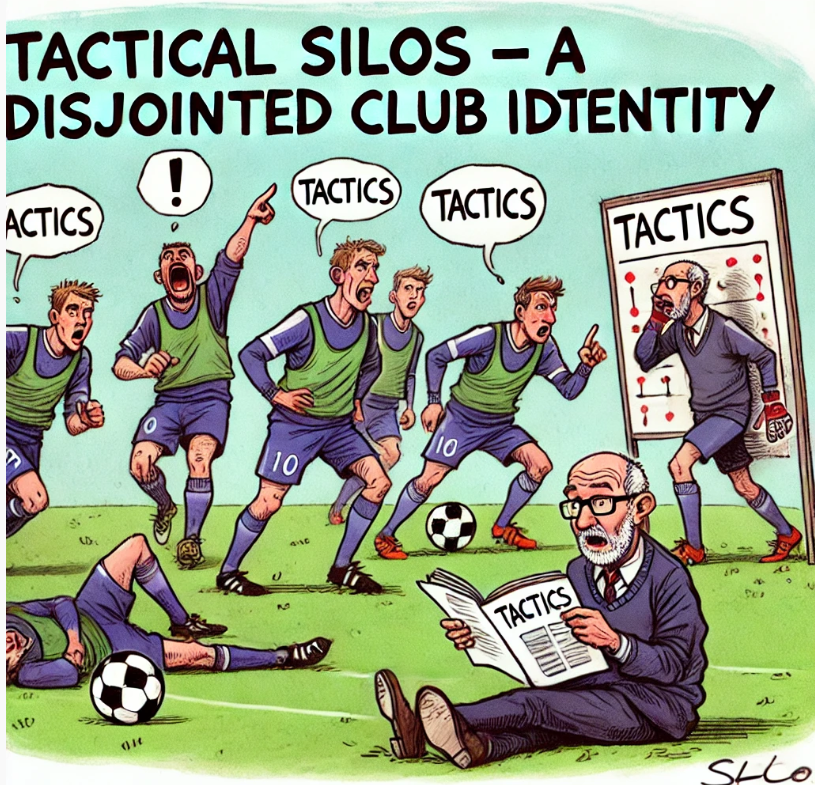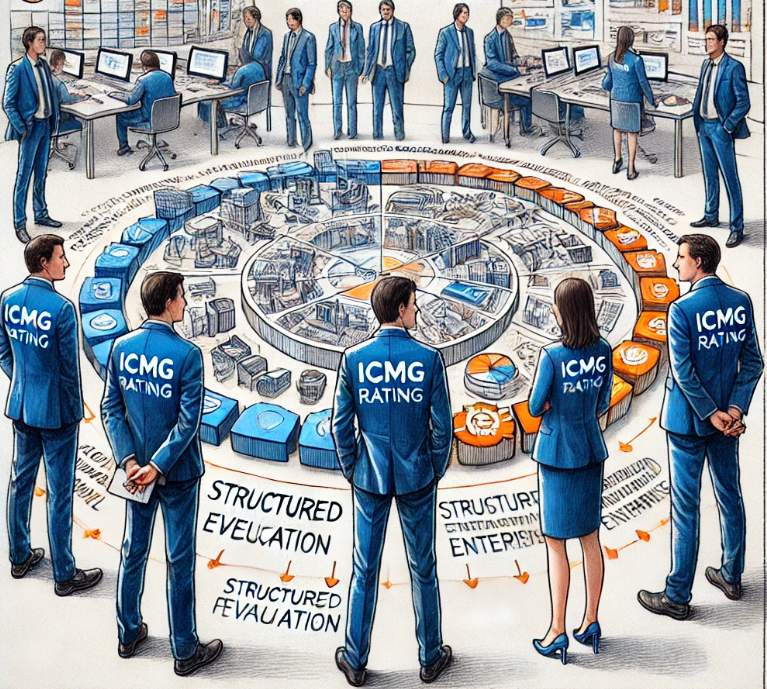One Football Club, One Anatomy: From Disconnected to Unified
- Sunil Dutt Jha
- Jan 28
- 4 min read
Updated: Feb 11

The State of Modern Football Clubs: Complexity Meets Competition
Football clubs today are more than just teams on the pitch—they are global enterprises managing talent development, sponsorship deals, fan engagement, merchandising, and operational logistics. Yet, despite their size and influence, systemic inefficiencies plague many clubs.
Disconnected departments, fragmented scouting systems, misaligned financial planning, and poor player performance tracking create bottlenecks that hinder success both on and off the pitch.
For Club Owners & CEOs, the challenge is to ensure financial sustainability while maximizing performance.
For Sporting Directors, the focus is on balancing recruitment, squad depth, and long-term development.
For Head Coaches & Analysts, integrating tactics, fitness, and player data into real-time decisions is critical.
But are clubs truly functioning as a unified entity, or are they just a collection of disconnected departments?
The Challenge: Measuring Performance Without Understanding the Full System
Many football clubs function like a scoreboard—tracking goals, assists, and match results but failing to analyze the underlying anatomy that determines long-term success.
They treat youth academies, scouting, first-team operations, commercial revenue, and fan engagement as separate units rather than an integrated system. This fragmented approach leads to:
Inefficient squad building – Poor talent identification and over-reliance on last-minute transfers.
Financial volatility – Disconnected revenue streams that fail to sustain long-term stability.
Tactical misalignment – Coaches struggle to maintain a club-wide footballing identity.
Let’s examine the 15 key departments of a football club and their systemic challenges.
The 15 Departments of a Football Club & Their Challenges
First-Team Management – Tactical inconsistencies due to a lack of club-wide playing philosophy.
Player Scouting & Recruitment – Fragmented data, leading to high-risk transfer decisions.
Academy & Youth Development – Misalignment between youth and first-team playing style.
Sports Science & Medical – Injury prevention and fitness optimization are not linked with match demands.
Matchday Operations – Logistical inefficiencies affect game-day execution and fan experience.
Fan Engagement & Digital Strategy – Clubs struggle to convert social media engagement into loyalty and revenue.
Sponsorship & Commercial Partnerships – Lack of real-time data on brand performance and ROI tracking.
Stadium & Facility Management – Underutilization of stadiums outside of matchdays leads to lost revenue.
Media & PR – Reactive media handling, lacking a proactive communication strategy.
Finance & Budgeting – Overinflated wage structures without a sustainable financial model.
IT & Digital Transformation – Scattered data across CRM, scouting tools, and fan engagement platforms.
Legal & Compliance – Navigating player contracts, image rights, and regulatory issues.
Sustainability & Community Outreach – Limited integration of social responsibility initiatives into club strategy.
Strategic Planning & Enterprise Architecture – No holistic structure linking football, business, and operations.
Game Analytics & Performance Analysis – Data-driven insights are not fully integrated into coaching decisions.
Obstacle 1: Tactical Silos – A Disjointed Club Identity

Without a unified club structure, football teams struggle with:
Short-term transfers disrupting squad balance.
Academy players failing to integrate into the first team.
Tactical inconsistencies across different age groups and divisions.
Without an enterprise-wide model, clubs lose identity, financial stability, and long-term success.
Obstacle 2: Disconnected Fan Engagement – A Revenue Blind Spot

Many clubs still operate with isolated marketing and ticketing strategies, leading to:
No real-time link between match performance and fan engagement.
Missed opportunities to monetize global fanbases effectively.
Disengagement due to inconsistent branding and communication.
Without real-time fan insights, clubs struggle to turn engagement into long-term financial success.
Obstacle 3: Financial Instability – Reactive vs. Proactive Revenue Models

Many clubs suffer financial instability due to:
High wages without sustainable player valuation strategies.
Uncoordinated sponsorship models that fail to maximize ROI.
Inefficient budgeting between football operations and commercial expansion.
Without a unified financial model, clubs remain vulnerable to short-term fluctuations.
Obstacle 4: Technology Overload – Data Without Direction

Football clubs invest in CRM systems, analytics tools, and scouting software, but:
Data remains unlinked, leading to poor player recruitment decisions.
Coaching staff lacks access to real-time insights for tactical adjustments.
Fan engagement platforms are disconnected from business operations.
Instead of empowering decision-making, fragmented technology slows down progress.
The ICMG Enterprise Anatomy Model: A Unified Approach for Football Clubs
Rather than fixing problems in isolation, the ICMG Enterprise Anatomy Model ensures:
1.One Football Club, One Anatomy – Aligning football operations, business, and fan engagement into a unified system.
2.Architecting Efficiency – Moving beyond tactical discussions to real-time optimization.
3.Enterprise-Wide Integration – Ensuring strategy, squad planning, revenue generation, and fan loyalty align seamlessly.
4.Cross-Functional Leadership – Making club executives and sporting directors enterprise architects, not just decision-makers.
The Six Perspectives of the ICMG Anatomy Model in Football Clubs
Goals/Strategy of 15 departments – Aligns playing style, revenue models, and club growth.
Business Processes of 15 departments – Standardizes workflows across football and commercial activities.
Systems/Models of 15 departments – Ensures IT systems and analytics support tactical and business goals.
Technology/Components of 15 departments – Defines player tracking, scouting databases, and digital platforms.
Implementation of 15 departments – Structures the execution of club-wide recruitment, marketing, and commercial plans.
Operations of 15 departments – Ensures real-time adjustments in squad management, fan engagement, and financial planning.
With this structured approach, football clubs can eliminate inefficiencies, optimize performance, and drive sustained success.
One Football Club, One Anatomy
Traditional Football Club Management vs. ICMG Enterprise Anatomy Model
Aspect | Traditional Management | ICMG Enterprise Anatomy Model |
Club Identity | Tactical strategies change with every new manager. | Unified philosophy integrating all departments. |
Scouting & Recruitment | Talent identification is reactionary. | Scouting integrates data-driven, long-term strategy. |
Financial Stability | Budgets fluctuate based on short-term success. | Revenue models link commercial success to performance. |
Technology Integration | Scattered CRM, scouting, and analytics tools. | AI-driven insights power real-time squad and business decisions. |
Fan Engagement | Social media and ticketing operate independently. | Omnichannel engagement connects fans with club operations. |
Club Operations | Decisions made in isolation, leading to inefficiencies. | Fully linked strategy, execution, and data models. |
Why ICMG Enterprise Anatomy Model Works for Football Clubs

One Club, One Anatomy – Aligns all 15 departments into a unified system.
End-to-End Integration – Ensures real-time coordination between sporting and business operations.
Sustainable Growth – Links player development, financial planning, and commercial expansion into a strategic framework.
Are You Ready to Transform Your Football Club?
Connect with us today to explore how the ICMG Enterprise Anatomy Model can drive on-field success, off-field revenue, and long-term sustainability.

